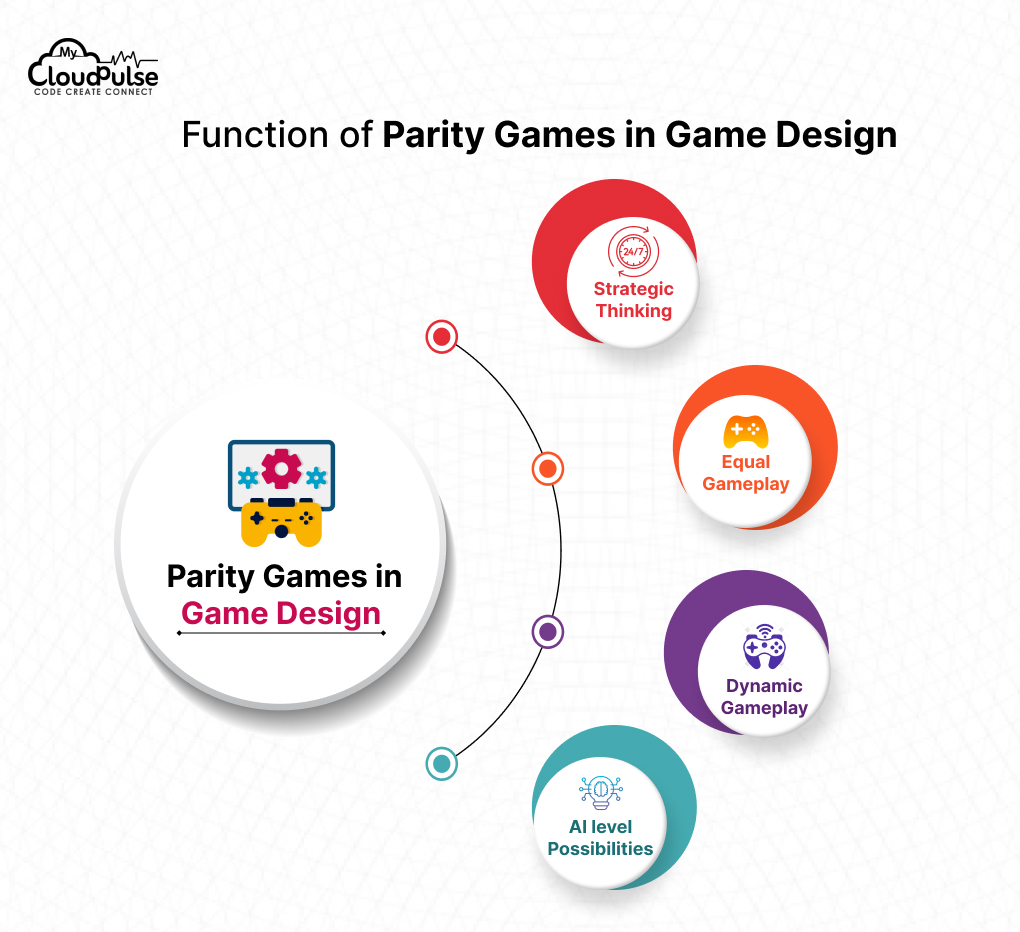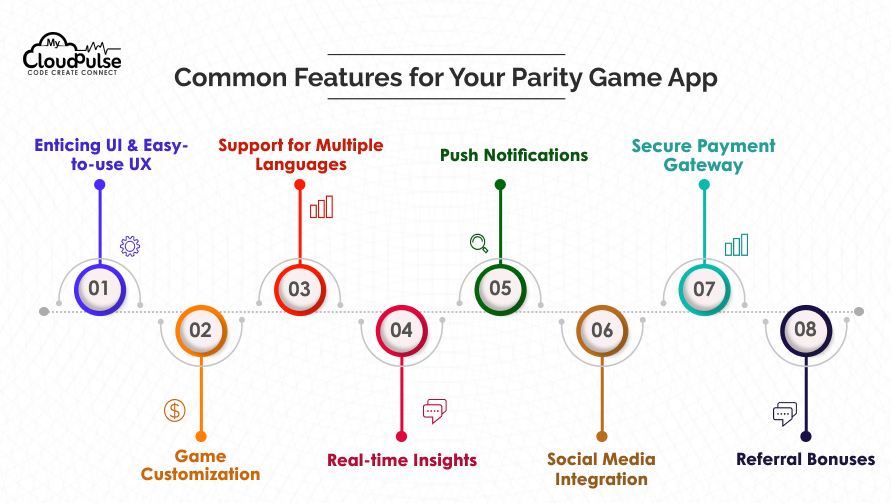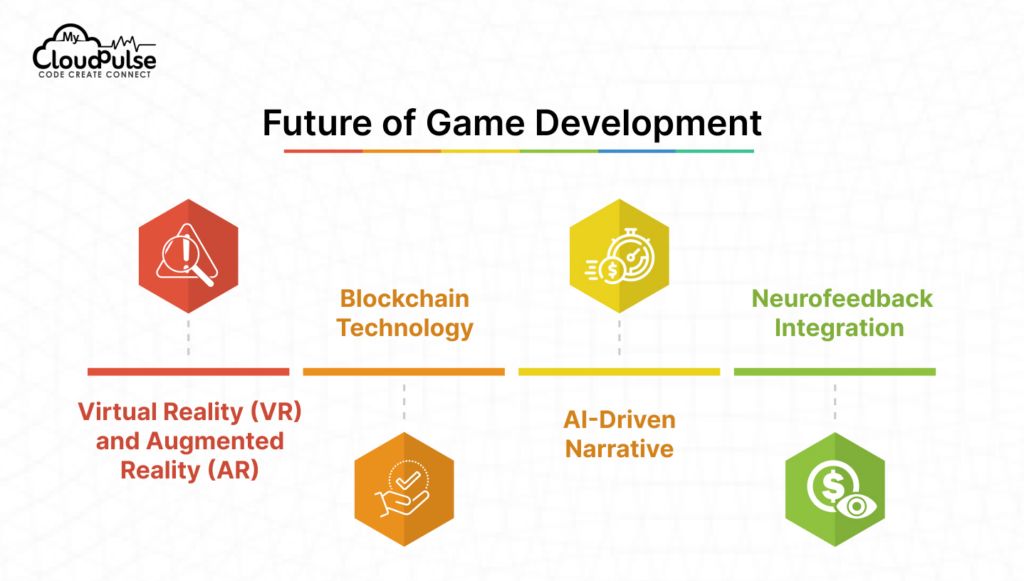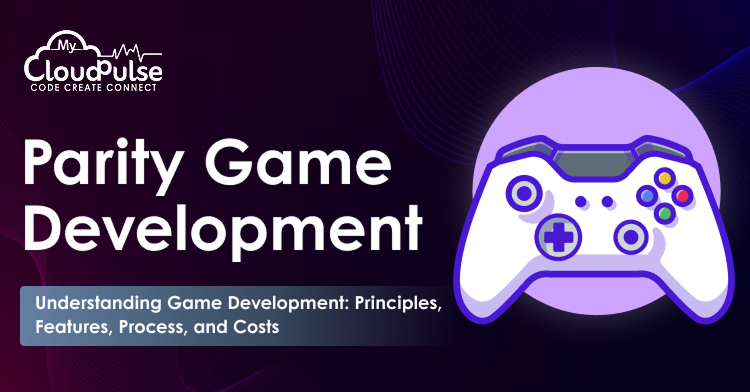Parity games are considered a form of combinatorial game where players have to guess or bet on the outcome color. Parity games provide computer scientists with a formal mechanism for modeling, measuring, and studying rich decision processes, outcomes resulting from strategies, and aspects of potential gameplay to provide an element of balance and fairness. These games can lead to gaming experiences that are more engaging, challenging, or critically thought-provoking. If you are considering parity game development and wondering what you should do next, we have you covered.
So, let’s cover explaining what parity games are, other features, and the costs to develop parity games.
Understanding What Is Parity Game
Parity games originate from theoretical computer science and are used to model and study decision-making in various areas of software engineering, such as verification, synthesis, and game theory. Over the past several years, parity games have grown and provide context for use in other applications, including game development.
Types of Parity Games
There are various types of parity games identified by the gaming pattern and the key elements involved. Understanding these types is important before you partner with a game development firm to build your parity game.
The main types of the parity games are:
- Color Wheel Prediction: This game features a wheel divided into different colors of sections that will be spun. Players must predict a color the wheel will stop spinning.
- Card-base Colored Prediction: There is a deck of cards in this game. The players must predict the next identified color of the drawn card.
- Dice Games: In the dice games, players roll twenty-sided dice to indicate what color would be on the upper face of the dice.
- Virtual Games: These are computer-generated random numbers. In this case, players need to guess the outcome of a virtual event, presenting visualization on the screen.
- Numbered Ball Draw: These are balls of different colors with a unique number. Players have to predict the color and number of the next draw.
Characteristics of Parity Games
A complete understanding of the characteristics of Layered Games is critical while respecting parity games. The characteristics that are of utmost importance are:
- Directed graph: Parity games are played on a directed graph relative to vertices, which are associated with the states of the game, and to directed edges, which represent feasible architectural movement.
- Two players: Structured similarly to games, there are precisely two participants with exactly two outcomes such that Player 0 relays and Player 1 takes turns each “each time movement.”
- Priority: Each vertex has a priority, which is always a natural number.
- Winning Condition: The player is to reach a vertex of the highest priority with the same parity as their wins in the game. For example, if Player 0 reaches a vertex with the greatest even priority, Player 0 wins. If Player 1 reaches a vertex with the greatest odd priority, Player 1 wins.
The Function of Parity Games in Game Design
Parity games have the potential to affect gameplay in many different ways significantly. By carefully selecting the graph structure, priorities, and subsequent rules, game developers can create an exciting experience full of fun and challenges.

- Strategic Thinking: Parity games provides an opportunity for players to think strategically and then make decisions. The players have think through many paths, each with its priorities and varying results. These processes engage the player on a deeper level.
- Equal Gameplay: A well-designed parity allows for equal gameplay, where one player does not have an advantage over the other. Redesigning the completed priorities and rules within parity games can ensure a fair game.
- Dynamic Gameplay: Game developers integrate randomness or chance into the gameplay, making the overall gameplay more dynamic with parity games. These attributes ensure the gameplay does not become static repetitive, or generic.
- AI level Possibilities: Parity games are valuable for developing intelligent AI players. When using the parity graph, students can revise the edges and priorities to make decisions based on those edges and adapt to the players.
Common Games that Follow a Similar Principle as Parity Game Mechanics
There are mishaps in games mentioned within the context of parity games or some of their synonyms; however, games with underlying parity principles can be found within many available games.
For example:
- Chess: Chess can undoubtedly be viewed as a parity game; therefore, the winner reaches checkmate (a vertex with the higher priority).
- Go: The game of Go indeed centers on decision-making while attempting to obtain a favorable advantage, which could be considered a parity-related concept.
- Real-Time Strategy Games: The underlying sport of play break can focus on the mechanics of resources needs planning. At the same time, strategy can be precisely even and simultaneously be subjected to analysis of the game of parity.
Parity games can be a powerful way to explore and identify games and game mechanics. By understanding the key characteristics, your game development team can create an interactive, engaging, and balanced gaming experience.
Features to Consider for a Parity Game Development
Technical Features for Parity Game Development
1. Choose the Right Game Engine
Choosing the right game engine is a crucial decision for any game development. The game engine should provide developers with the tools and features they need to implement your intended gameplay without a lot of overhead. Some standard game engines that developers prefer for parity game development include:
- Unity: A very flexible and popular game engine with a large community and asset store.
- Unreal Engine: A powerful game engine that has good graphics engines and is highly capable of rendering in real time.
- Godot: A free and open source engine, not as feature-rich as others for game development; however, it has a focus on ease of use and customization, which should be necessary when developing your game, and is extensible.
2. The Significance of AI Integration
AI is a critical element of parity games, providing intelligent opponents and a challenging game experience. Here are some considerations that most game development teams stick to when integrating AI into your game:
- AI Difficulty: Before your mobile app development team gets to work, define how difficult you want the opponents in the game to be, balancing challenge and fairness.
- AI Algorithms: Discuss with the app development team, the relevant AI algorithms (minimax, alpha-beta pruning, and Monte Carlo Tree Search) based on the complexity of your game.
- Learning Capabilities: Incorporating machine learning functionality will allow the AI to learn and adapt to changing conditions in a more dynamic and challenging manner over time.
3. UI/UX and Graphics
The UI/UX of your parity game should blend well with the gameplay you have planned and offer an immersive experience. When designing your game, think about the following:
- Art Direction: Let your UI/UX team decide on a consistent art direction that suits the theme or tone of your game.
- Character Design: To offer your users entertainment and engagement, make sure to design characters that will stand out as unique (and not generic) and mirror the world they’ve lived in and the roles of the player.
- Environment Design: Let your designers create an environment that stands out to be interesting to look at and (again) doesn’t look generic.
- User Interface Design: Let your UI/UX developers build a clean user interface, directly present only relevant information, and offer an easy navigation experience.
4. Sound Design and Music
Sound design and music are often overlooked in most applications. But in most cases, they become the identity of the game. When working on your game sound, you should think about:
- Sound Effects: Use only accurate sound effects for what the player interacts with to create a realistic sound world for the context.
- Music and Bruh: Think about the appropriate music that is moving to build a world.
- Sound/Audio Cues: You may implement audio cues to guide players for things like when they are successful or in danger and need to escape.
These are some of the most technical aspects that you need to discuss with your game developers before they start turning your idea into an immersive gaming reality.
Common Game App Features Parity Game Developers Integrate in Your Solution
The features of an app attract users and as you get a good number of users, you get more success through your app. Here are the standard features to consider for parity game development:

1. Enticing UI & Easy-to-use UX
Gambling players always demand a simple app with an attractive and easy-to-understand interface. Thus, the UI & UX should be engaging and straightforward.
2. Game Customization
The players should have multiple customization options like changing of theme, sounds, text style, etc.
3. Support for Multiple Languages
If you want to attract a global audience, then you must provide content in multiple languages.
4. Real-time Insights
Real-time insights are essential to know the player’s behavior, engagement, interest, etc. You can learn which players are most interested in the game.
5. Push Notifications
Push notifications are necessary to provide updates to the players about new games, offerings, results, etc. It will also keep the players connected with the game.
6. Social Media Integration
Social media integration will increase the popularity of the game. The players would be able to share their progress or their winnings with their friends or family via social media platforms.
7. Secure Payment Gateway
As the gambling game involves financial transactions, the payment gateway must be secure and reliable.
8. Referral Bonuses
A referral strategy works a lot in gambling games in which the users wish to earn a referral bonus by inviting their friends to the app.
With these technical and standard features integrated with your parity game you can stand out in the competition and win a loyal customer base. To create a rewarding game that helps you make your mark in the market, you need to pick the right development team that can help you develop a parity game the way you have envisioned.
Our developers here share their development process in brief.
Parity Game Development Step-by-Step
Parity game development works much similarly to other app development. It involves the basic steps of creativity, technology selection, game mechanics planning, development, deployment, and iteration. Here’s how our developers approach developing a parity game:
1. Determine the Base Concept
Plan out the central idea of your game and the experience you want to give to your users. Once you share the details, our experts map your game, define the technology, and share with you the documentation with a timeline of development.
You can hire dedicated developers for your project who would work as your in-house team.
2. Create the Gameplay Mechanics
Design and define the rules and goals of your game. Define the characters, their movements, music, and other aspects of your game.
3. Create the Player Interface
Let your UI/UX designers create a user-friendly interface that can be easy to use and understand. This includes menus, controls, and how information is delivered.
4. Implement Game Logic for Parity Games
Let the developers get into action and develop the main logic of the game. Let them turn all the elements into functioning units and share with you an immersive game.
5. Testing and Iterating
Before deploying, our team of Quality Analysts and Software Testers test the game thoroughly. We ensure your parity game runs smoothly and offers an entertaining experience to your users.
6. Optimize Performance
Check optimization for graphics, maximize the performative and interactive AI, and maximize performance on any other cost.
7. Launch and Advertise
Release the game and advertise it through various means such as social media, advertisements online, community engagement, etc.
These are the basic steps involved in developing a rewarding parity game. To ensure your revenue increases with time, make sure to update your app with the latest technologies in the market.
Future of Game Development
Not just parity games, but the mobile gaming industry as a whole is an evolving space that has a lot to offer to its users. Some of the top tech trends that have a significant impact on the game development arena are:

a. Virtual Reality (VR) and Augmented Reality (AR)
Immersive experiences in VR and AR could revolutionize games by putting players into a physical game world virtually, and allowing them to interact in physical space.
b. Blockchain Technology
Blockchain technology could offer new possibilities in developing decentralized games that would allow players ownership of in-game assets and trade with one another.
c. AI-Driven Narrative
Artificial Intelligence could generate dynamic narratives and unfold storylines driven by choices a player has made in the games, as well as their actions along the way, that personalize the experience immensely.
d. Neurofeedback Integration
Neurofeedback technologies could be employed to measure players’ emotional responses and dynamically change difficulty or content within digital time and space, in real-time, or within the experience.
By utilizing the trend moving forward in planning game features and managing ongoing player feedback, game developers can better create authentic, innovative, and fun games and experiences for players to enjoy.
How Much Does It Cost to Develop a Parity Game?
Just like any other mobile application, the cost of parity game development will depend on multiple factors, such as the complexity of the game, the platform of the app, the location of the development team, advanced features, and others.
Among all these factors, the development location matters the most as it can significantly impact the costs. The developers located in the USA or Europe will charge nearly $80-$120 per hour, while you can get the same quality of development in countries like India at $25-50 per hour. A rough estimation of the cost would be $5,000-$15,000 for a simple parity game development.
Wrapping Up
Now that we understand the features, development process, and critical investment behind a parity game, you can make it big in the market. Parity games are gaining popularity for the ease and engagement they offer. If you want to monetize on the trend, connect with top game developers and let them take care of your game idea.




